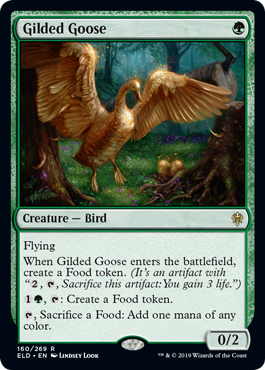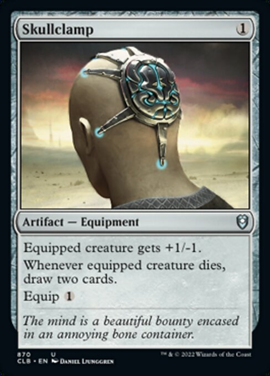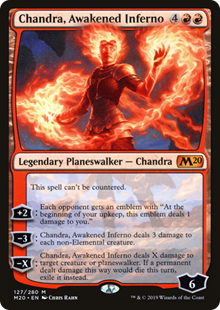MTG Tokens: Magic Cards That Aren’t Actually ‘Cards’
MTG App Staff
26 Aug 2022
If you’re a Magic player, you’ve probably come across the word “token” before. But what are tokens, exactly? In essence, tokens are cards that aren’t actually cards. They’re created by other cards, and usually have some sort of effect on the game. In this article, we’ll discuss what tokens are, and take a look at some of the best token creating cards in the game.
What are MTG tokens?
Tokens represent permanents and are generated by other cards. Token start the game out of your deck, preferably within arm’s reach. If your deck contains cards that generate tokens, it’s good practice to ensure you bring the correct tokens with you to the game. Some players will use empty sleeves or face-down cards to represent tokens they don’t have the right tokens for but this can make it hard to keep track of for other players.
Creature tokens


Raise the Alarm, for example, creates two 1/1 white soldier creature tokens when it resolves. These tokens function similarly to creature cards except that if they leave the battlefield then they are removed from the game. This doesn’t mean they are exiled; you just take them off the battlefield. This means that if these soldier tokens die they won’t trigger abilities that say things like “whenever a creature is put into a graveyard from the battlefield” because they never actually touch the graveyard, or your hand if bounced.
Creature tokens are among Magic’s flimsiest creatures for this reason. An overloaded Cyclonic Rift will genocide all tokens on the board because can’t go to their owner’s hands. A mana value-specific board wipe like Ritual of Soot does the same.


So creature tokens don’t seem so great because they die to a stiff breeze, but at least in most cases, they’re efficient to generate for go-wide strategies with cards like Avenger of Zendikar.

Not all creature tokens are small; some can be bigger than actual creature cards, like Marit Lage (generated by Dark Depths and Marit Lage’s Slumber) or a construct token with a lot of artifacts in play.


Food tokens
Debuting in Throne of Eldraine, food tokens are now evergreen because of their simplicity and flavor. What I dislike about food tokens is they’re somewhat durdly and stall the game too much in one-on-one formats, especially with cards like Trail of Crumbs and Gilded Goose.



Treasure tokens
These ones are better because they speed the game up. Treasure tokens are not to be underestimated in Commander, as one well-timed Dockside Extortionist can open the floodgates to victory.


Clue tokens
We’ve looked at tokens that generate life and mana but what about card advantage? Enter clue tokens, another evergreen token but one that’s less common than treasure or, arguably, food. Some removal spells give your opponent a clue as a tradeoff for a lower mana cost, like Declaration in Stone, for example.


Token steroids: token generators
So we’ve had a look at a few examples of Magic’s most iconic tokens and the cards that generate them, but what about other cards that help tokens?
Parallel Lives and Anointed Procession are the first cards to come to mind when discussing cards that make tokens go brrr. If left alone these cards can do a lot of work, but that’s the problem with them–”if left alone”. Usually, these ones will be killed on sight in a game of Commander. Regarding other formats, they don’t see much play, mostly because they don’t impact the battlefield itself when they resolve.


The next card isn’t directly related to tokens (it doesn’t even have the word on the card) but it’s unusual that you wouldn’t see it in a token deck, especially one that produces 1/1 tokens. Skullclamp was banned in standard for being absurdly broken, and it still is today, just for the sheer amount of cards it can draw. These days you’ll mostly see it played in Commander and in Legacy elves.

Another card that’s not directly related to tokens, Aura Shards can quickly wreck a battlefield clogged with artifacts and enchantments if you follow it up with token generators.

Similar to Anointed Procession and Parallel Lives, Divine Visitation is a token steroid but one that makes all of your tokens into 4/4 angels rather than increases the number. It’s strong if you can immediately follow it up with a token-generating ability, especially one that produces the highest number of tokens possible. However, if you can’t immediately follow it up with tokens then it’s probably best not to play it as it will just get removed.

We’ve talked a lot about creature tokens but what about winning the game with treasure? Revel in Riches does exactly that. It’s certainly a cheesy wincon but if your opponents allow you to get away with it then you certainly shouldn’t feel bad about it.

If you’re sick of treasure tokens or artifacts in general then Stony Silence is the card for you. Rookie players will allow it to resolve before finding out to their horror that it locks out their treasure tokens as well as all of their artifacts, regardless of whether their activated abilities are mana abilities or not. Karn, the Great Creator has the same effect. On a side note, you can follow up with a Mycosynth Lattice and it will truly be lights out.

Tokens versus emblems
Emblems are another ancillary card type that you put in your deck box but not in your deck, much like tokens. They’re generated by other cards, usually planeswalkers like Chandra, Awakened Inferno. Unlike tokens, however, emblems can’t be interacted with and will stay in the game permanently unless they instruct otherwise.


Final thoughts
Tokens are an integral part of Magic, with newer sets integrating them more often than ever before. One growing concern about the future of Magic is that the amount of stuff you’ll need to bring with you to a game is inflating. This is called ‘logistical complexity creep’ and has been addressed by Magic’s head designer, Mark Rosewater, in his personal blog. The gist of his response is that it’s unavoidable as long as the game keeps innovating, but their team is aware of it.